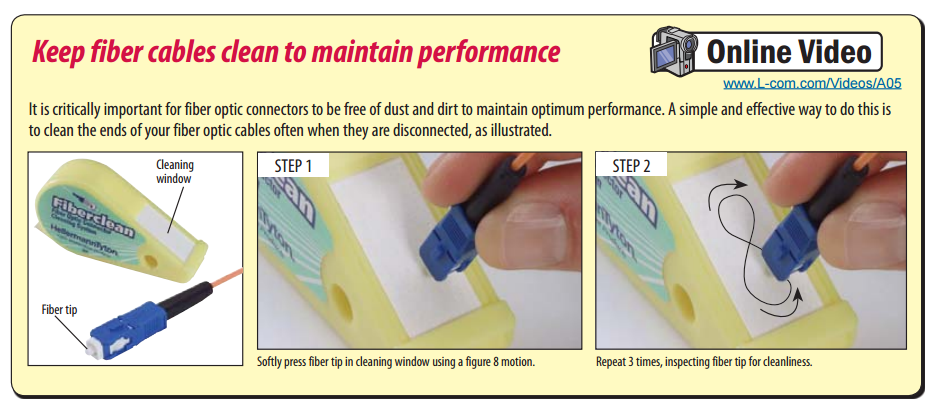Frequently Asked Questions about Fibre Optic Products
A fibre optic cable is a network cable that is composed of strands of glass fibres inside an insulated case. They're perfect for long distance, extremely high performance data networking and telecommunications.
In comparison to wired cabling, fibre optic cables provide significantly higher bandwidth and transmit data over much longer distances.
Fibre optic cables are used today for interconnecting the world's internet, cable TV networks and telephone systems.
There are several types of fiber optic connectors available today. The most common are: ST, SC, FC, MT-RJ and LC style connectors.
All of these types of connectors can be used with either multimode or single mode fiber.
There are three types of polishes which can be applied to a fiber connector: PC or Physical contact, UPC or Ultra Physical contact and APC or Angled Physical contact.
Each polish type exhibits a different level of back reflection. Back reflection is a measure of the light reflected off the end of a fiber connector. This light is measured in decibals.
For certain applications, the amount of back reflection on a fiber connector is critical.
No, Fibre is just as simple, and sometimes easier, to install than copper. Since fibre has been accepted as the standard choice for communications backbones for many years, today's installers are comfortable with the technology. In fact, new generation high-speed copper networks, such as Category 5e and Category 6 Unshielded Twisted Pair (UTP) cable require more stringent and time-consuming installation techniques than those of fibre. Compared to newer grades of copper cable, fewer regulations exist on the methods by which optical cable is pulled and terminated. In addition, there is no need to worry about the location of EMI/RFI sources during installation. Furthermore, optical fibre cables are stronger, lighter and smaller than comparable copper cable designs, and there are few routing restrictions, particularly in areas with other electrical power cables.
A simplex fiber cable consists of a single strand of glass of plastic fiber. Simplex fiber is most often used where only a single transmit and/or receive line is required between devices or when a multiplex data signal is used (bi-directional communication over a single fiber). A duplex fiber cable consists of two strands of glass or plastic fiber. Typically found in a “zipcord” construction format, this cable is most often used for duplex communication between devices where a separate transmit and receive are required.












